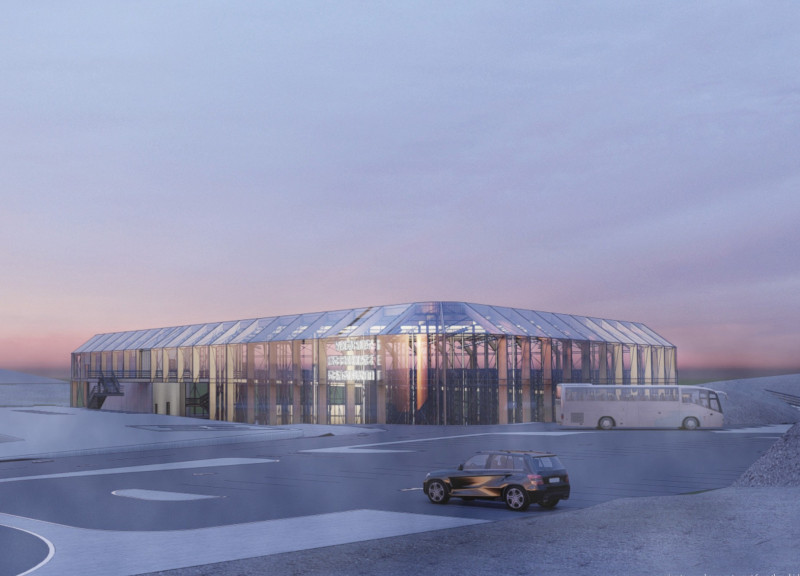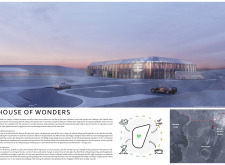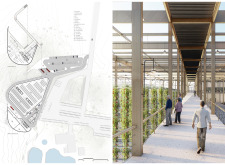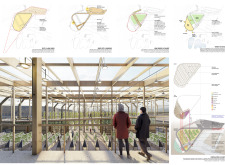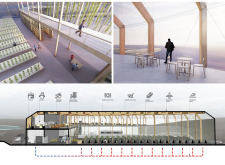5 key facts about this project
The "House of Wonders" is an architectural project situated near the Mývatn Nature Baths in Iceland. This structure functions as a combined greenhouse and restaurant, promoting an immersive experience that connects visitors with Iceland's natural landscape and agricultural practices. The design reflects an ecotourism ethos, emphasizing sustainability, local produce, and culinary education.
Integration with the environment is a key feature of the architecture. Large glass surfaces facilitate transparency and visual engagement with the surrounding landscape, enhancing the dining experience while promoting light and ventilation. The project incorporates a predominantly open floor plan, allowing for a fluid movement between spaces, including dining areas, educational zones, and active greenhouse sections.
Sustainable practices underpin the project’s design. The use of geothermal energy and solar panels aims to minimize its ecological footprint, adhering to Iceland's commitment to environmental stewardship. What distinguishes this project from others in the region is its dual-purpose nature, merging culinary experiences with agricultural education. Visitors can engage directly with food production, observe growing processes, and understand the farm-to-table philosophy in practice.
Architectural elements such as wood, glass, concrete, and steel work cohesively to support the structure while maintaining a modern aesthetic. The extensive use of glass not only serves functional purposes but also cultivates an environment filled with natural light, creating a welcoming atmosphere for diners.
The design emphasizes user experience by encouraging interaction with both the food and the natural world. This is realized through open kitchen concepts, accessible pathways, and thoughtfully designed spaces that invite exploration. The unique positioning of the building captures panoramic views of the iconic Icelandic landscape, contributing to the overall experience of the "House of Wonders."
For a comprehensive understanding of the project, including architectural plans, sections, designs, and ideas, exploring the complete project presentation is recommended. This will provide insights into how the architecture harmonizes with the surrounding nature and the innovative approaches adopted throughout the design process.


